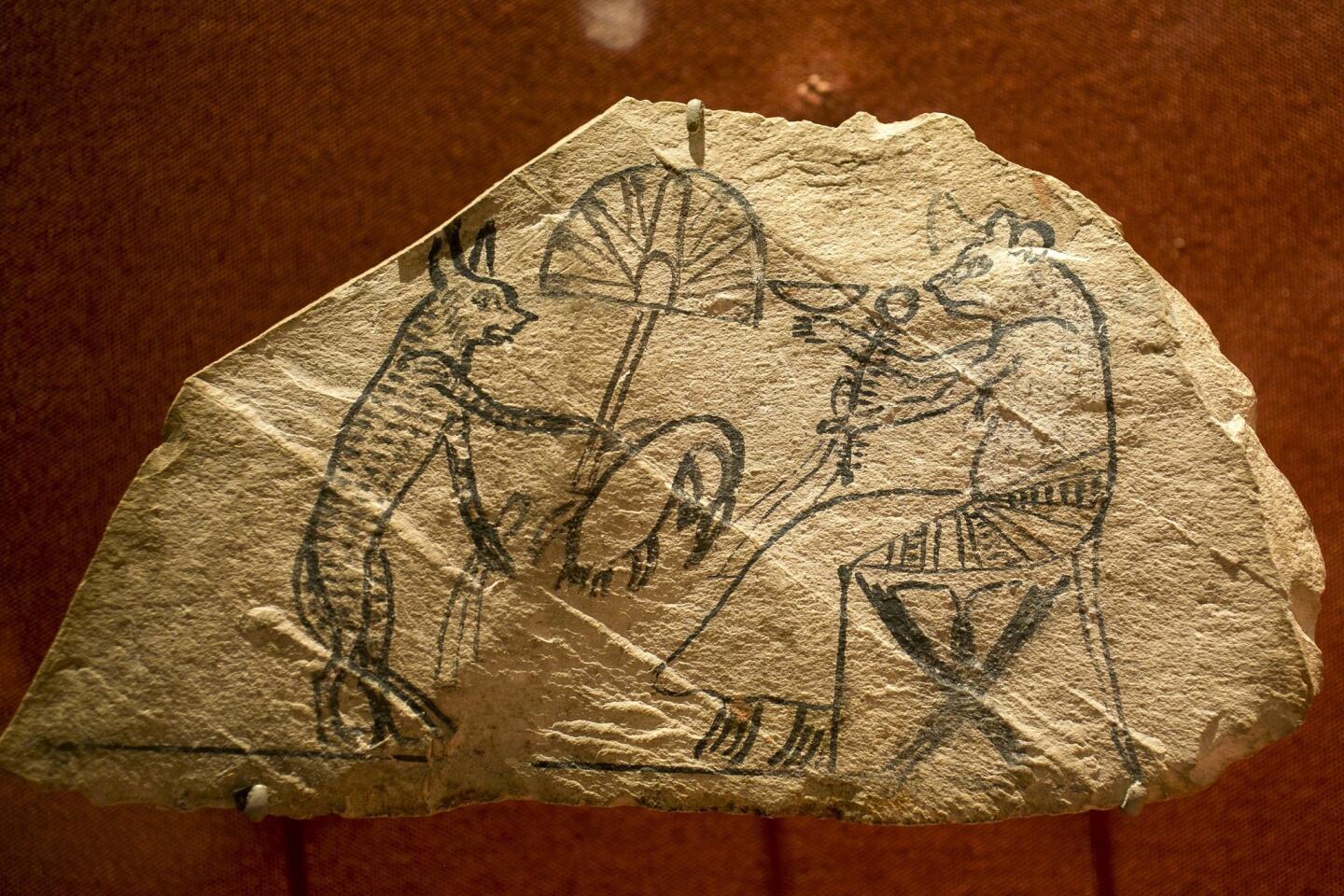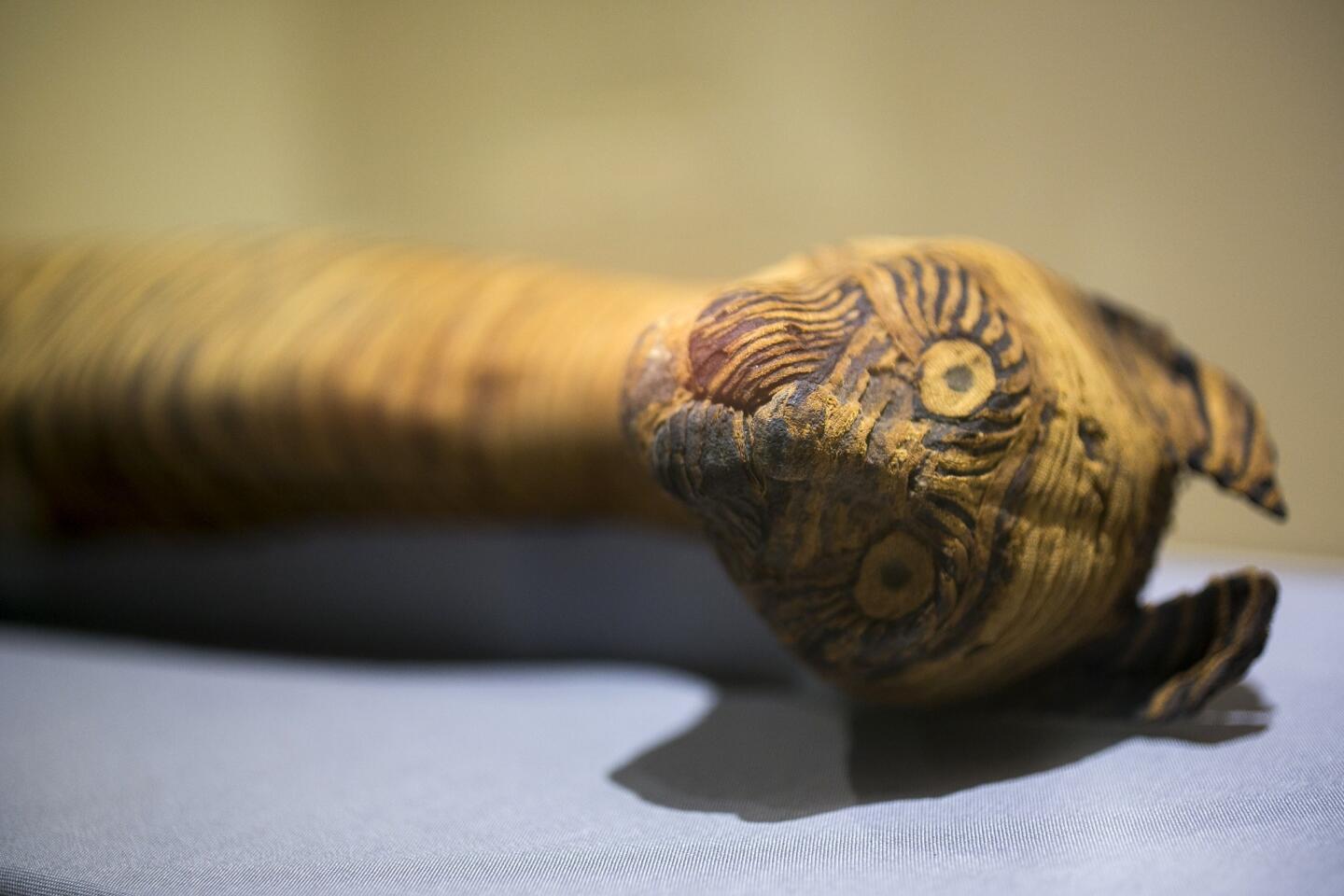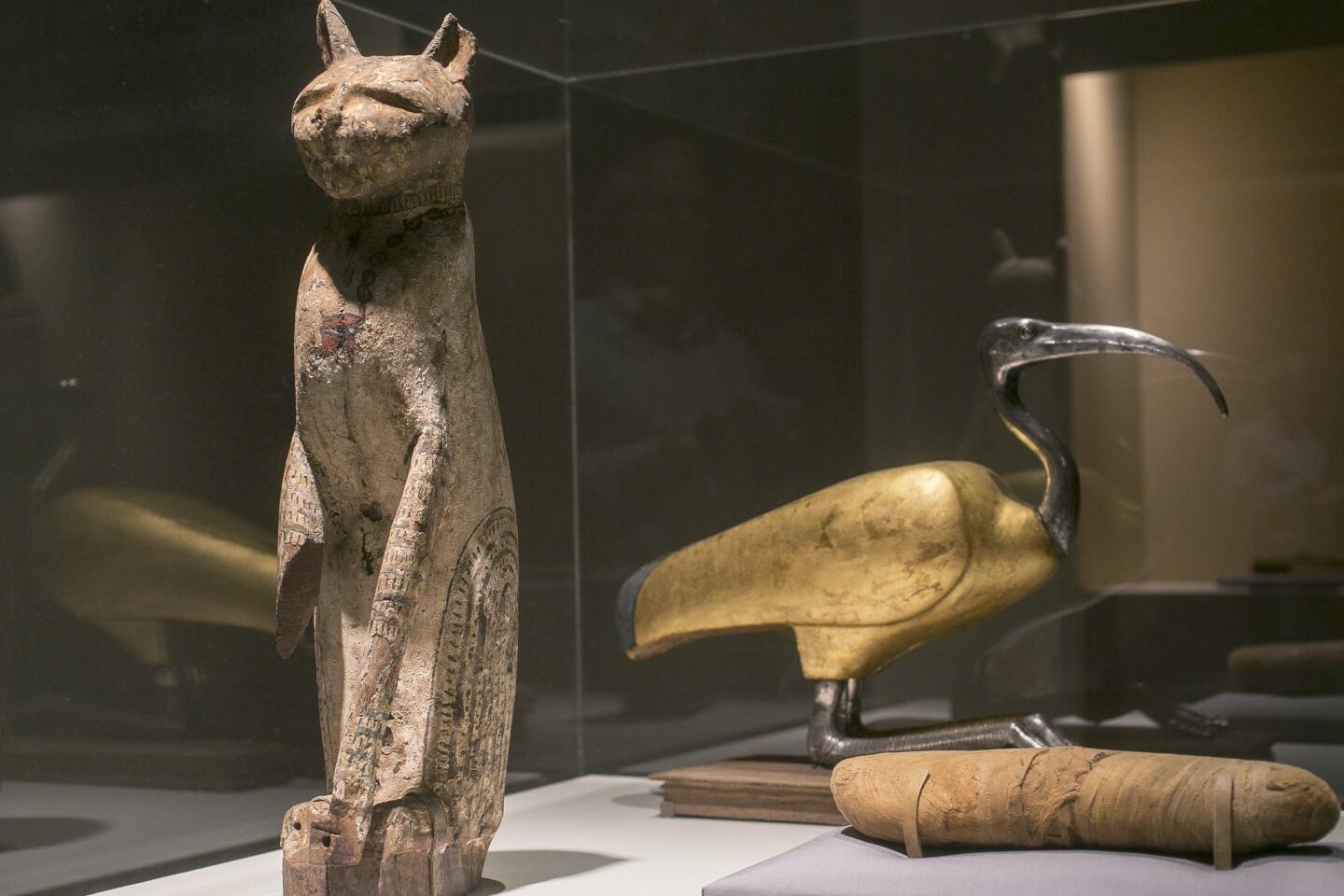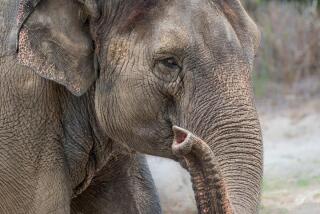A menagerie of ancient animal mummies at the Bowers Museum
One of the first artifacts in the new Egyptian mummies exhibition at the Bowers Museum isn’t some Tut-like tomb but rather a rudimentary bronze box, about an arm’s length but no wider than two fingers, topped by a sculpted figurine of the creator god Atum rendered with the face of a cobra. It’s a snake coffin, among the surprises and mysteries derived from more than 30 animal cemeteries in Egypt.
Creatures as small as scarab beetles and as great as cattle were mummified as food offerings for the deceased or, most often, as a form of communication to the gods. Ancient Egyptians believed animals had souls, and mummification freed those souls of earthly constraints and allowed them to carry messages to the heavens.
One dog cemetery has an estimated 7 million mummies. Another burial ground has 4 million mummified ibises. The exhibit in Santa Ana, curated by Edward Bleiberg and organized by the Brooklyn Museum, includes falcons and baby crocodiles, wooden coffin boxes and clay mummy jars. Visitors will see a limestone cat sarcophagus that’s more than two millenniums old and a hollow bronze brick, the two kitten ornaments on top indicating the contents. Carbon dating of the linen wrapping inside puts its origins at 850 to 540 BC, making it among the oldest of relics on view. Even tinier: a bronze coffin for a shrew, not much larger than a matchbox, the resting place for an animal believed to be guardian of the sun god Re.
CRITICS’ PICKS: What to watch, where to go, what to eat
The subject may initially seem morbid but ultimately carries an odd beauty. Linen wrappings and reed decoration have been finished with geometric intricacy and patterned precision. Aficionados of craft will see similarities with basketry art; architecture buffs will see the coffered-box designs of the Roman period.
One bull mummy is composed with such accurate scale that if you were to just see a photograph, you might not realize it’s a model smaller than a football. And inside? Not full remains of an animal but rather a single bone. In fact, through X-rays and CT scans, researchers have discovered some mummies contain not one but two animals, a practice later outlawed by Ptolemaic III. Others contain no animal remains at all — possibly a sign that the customer got cheated by the mummy preparer.
“Soulful Creatures: Animal Mummies in Ancient Egypt” runs through June 15; https://www.bowers.org.
More to Read
The biggest entertainment stories
Get our big stories about Hollywood, film, television, music, arts, culture and more right in your inbox as soon as they publish.
You may occasionally receive promotional content from the Los Angeles Times.











